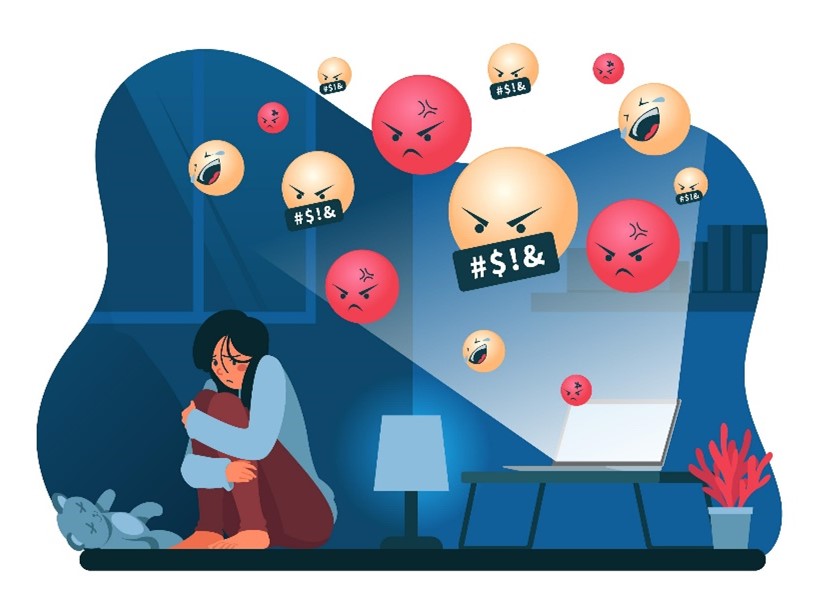With the increased use of social media and internet-connected devices problems that we faced in class can shift to online spaces. It doesn’t mean that these problems will be limited to just the classroom or just social media, many situations can start in one space and move or evolve into another, making them more serious and complex.
Just like bullying can have many forms, cyberbullying can be in form of exclusion, cyberstalking (where the cyberbully monitors the victim’s online presence closely and make accusations against the victim), doxxing (when cyberbullying shares personal data without permission that wouldn’t normally be publicly known), impersonation or catfishing (where cyberbully exploits victim’s emotions and pretends to be someone else; after gaining trust and possibly personal information of the victim, a bully might share them to embarrass a victim, damage their reputation or expose them). Unfortunately, cyberbullying isn’t just connected to random people on the internet. Every person can fall victim from students to teachers and school staff.
 Source: https://freepik.com/
Source: https://freepik.com/
What steps you can take to prevent cyberbullying?
- Take cyberbullying seriously.
The first step is for teachers to accept that cyberbullying problem is serious. People who don’t care or dismiss cases will encourage cyberbullying as perpetrators will feel like they will never suffer any consequences.
- Teaching online etiquette can help prevent cyberbullying from happening.
Teaching online manners is an important step in making sure that students know the right ways to act when they interact online. Rapid digitalization happening in our lives created conviction in many that we can be completely invisible online. With the right continuous education of everyone around, we might limit the number of cyberbullying cases.
- Listen to the victim’s problems calmly and respond thoughtfully.
No two cases of cyberbullying will be the same, and this is why when a victim of cyberbullying will come to you for help you need to listen to them and be supportive. You can do a little bit of research on your own through the internet, talk with other teachers, your supervisor or school psychologist if you have one and make sure to come up with good solutions to their problems and not misguide them.
- Encourage others to report a cyberbullying accident.
As a teacher, you cannot always witness a cyberbullying accident. Many students don't report cyberbullying, even though they know it's wrong. This is because both witnesses and victims may be hesitant to report it. They may be embarrassed, concerned about the trouble it will cause, or worried that the bullying will get worse if they talk about it openly. Teachers need to avoid shaming victims - if a victim doesn't report cyberbullying they should not get in trouble.
- Prompt students to become leaders to stop cyberbullying in schools.
This goes in line with the saying “instead of giving a man a fish, teach him how to fish”. As a teacher, you cannot always be present when a student gets victimized online, in some cases, it might happen beyond channels that you can see. A good option would to be make the students themselves the leaders in stopping cyberbullying activities.
- Come up with an effective and actionable response plan for cyberbullying reports.
When someone reports that they are being bullied online, it's important to have a plan for how to handle the situation. Someone might report to you as a joke, and some reporting incidents may be severe (like cyberstalking) while some may be less severe (like expulsion). You need a proper response plan for all these cases. As a teacher, it is important that if a student reports an incident of cyberbullying, it is considered. You can't make it seem like no action is being taken even after an incident has been reported.